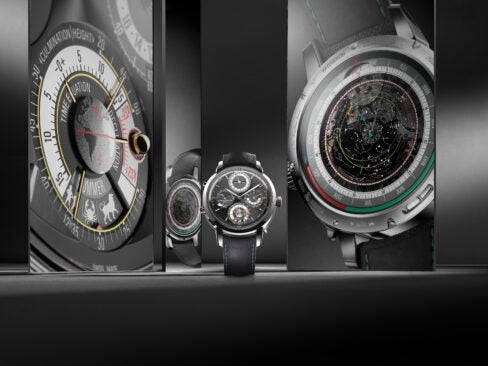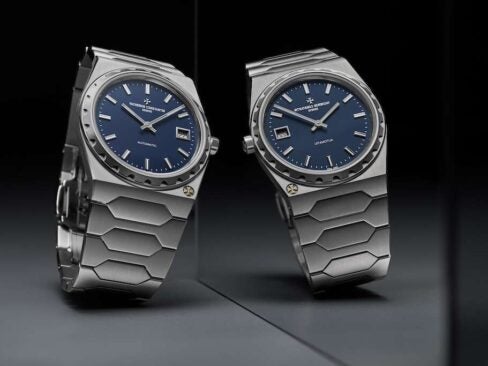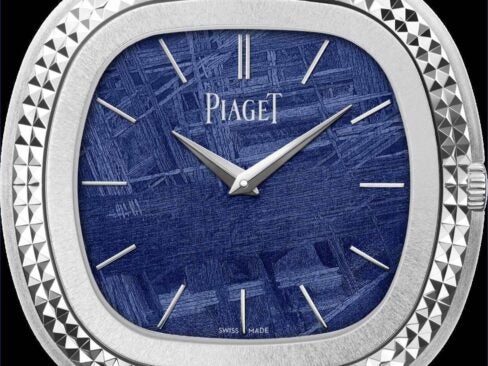By Elizabeth Doerr
Reborn French masters gift collectors with superb examples of luxury watchmaking, at least partially made in Switzerland.
L.Leroy Osmior Tourbillon
L.Leroy’s general director Guillaume Tripet is very aware of the legacy in his care. “This is an opportunity to relaunch French watchmaking,” he explains. “We are the beneficiaries of an extraordinary inheritance.” And by reanimating one of watchmaking’s most sonorous names, Tripet and his team have indeed piqued the interest of connoisseurs and collectors.
A watchmaker to royalty, Basile-Charles Le Roy was a contemporary of Abraham-Louis Breguet. After the French revolution, Le Roy’s company was a maker of clocks and the more portable carriage clocks. The modern company, however, is named for Louis Leroy, born in 1859, son of chronometer-maker Théodore-Marie Leroy. In 1889 Louis changed “Le Roy & Fils” to “L.Leroy & Cie”—taking the company to new heights with the Leroy 01, a hyper-complicated, 26-function pocket watch, a collaboration between L.Leroy, located near France’s Besançon, and Charles Piguet of Le Brassus, Switzerland that took four years to complete.
In tribute to this collaborative process, the modern L.Leroy company, now under the umbrella of the Festina-Lotus group, also works partially in Besançon and partially in Switzerland. The new collection comprises two pillars: The Marine, based on the typical marine chronometer visuals, and the Osmior, a chronometer-certified regulator-dial line of complicated watches. The word “osmior” denotes a white gold alloy that was used as a “replacement” metal for platinum in the Art Deco era.
Looking past the Osmior Tourbillon’s interesting regulator-style dial, the automatic movement is remarkable for a couple of reasons: The inclusion of diamond in the escapement and the fact that it is officially certified by the Chronometer Certification Service of the National Observatory in Besançon. The flying tourbillon at 12 o’clock is not only prominent and unusual, it also leaves a lot of room for decorative play such as hand-engraving and hand-guilloché for limited series and unique pieces.
Currently, L.Leroy produces between 200 and 300 timepieces per year. The 41mm Osmior Tourbillon in rose or white gold was inspired by a historical pocket watch and ranges in price from $133,900 to $203,900 for a skeletonized Art Deco-style model, and all the way to $445,000 for a fully diamond-set version.
Contact: Michael Goldstein, (954) 937-9180; mgoldstein711@gmail.com; www.montres-leroy.com
julien Coudray 1518 Competentia 1515 Tourbillon
Though Fabien LaMarche is fully ingrained in the Swiss watch industry, he has decided to buck the established style of homegrown Helvetian watchmaking—traditionally a cottage industry that relies heavily on suppliers to contribute components and skills—to create a brand possessing all the skills and crafts it needs under one roof. As a supplier to some of the industry’s best, LaMarche is in the unique position to be able to do just that.
In christening his company with the name julien Coudray 1518, LaMarche deliberately alludes to both France and the Renaissance, an era in which ways of thinking and creating were transformed. Julien Coudray, in fact, is said to have been King François I’s royal watchmaker as well as the horologist to make the first portable movement, which he inserted into a dagger handle.
According to LaMarche, Coudray was part of the era propagating a new school of scientific thought that saw art being fueled by investigation and curiosity, and artists and scholars simultaneously seeking to understand and express nature.
At the forefront of something industrial yet artistic, julien Coudray helps LaMarche to come out from behind the scenes and fully express himself. His expressions include both high mechanical watchmaking and artistic elements such as authentic styles of engraving and enamel.
In fact, LaMarche is quick to point out that julien Coudray 1518 timepieces only include the most noble and authentic enamel materials applied by an in-house enameler: No chemicals, no printing, and no coating. The 11-part platinum dial shown here is embellished with both plique-àjour and grand feu enamel styles. The hands found on julien Coudray dials are all personally handmade by LaMarche.
Caliber 1515, the movement within the 43mm platinum Competentia Tourbillon case, perfectly expresses LaMarche’s ideals. This movement, which also includes a four-year service indicator (like the “oil” display in a car), is crafted in 52 grams of solid platinum, but the brand begins with a block of 1.5 kilograms of solid platinum, which ensures that all components have precisely the same alloy and color.
This version of the Competentia 1515 Tourbillon is limited to 15 numbered pieces (the company can manufacture only 40 pieces total per year), and like all timepieces signed by LaMarche, it boasts a 10-year guarantee ($480,000).
Contact: Ilias Verras, (212) 207-3976; ilias.verras@gmail.com; www.juliencoudray1518.ch












